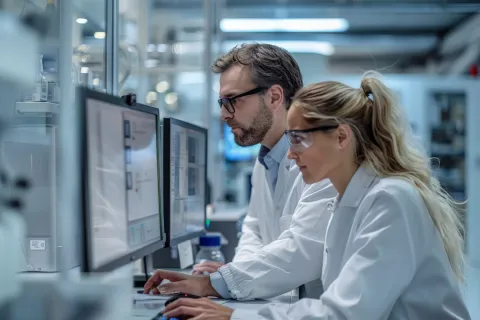
In the pharmaceutical industry, ensuring environmental monitoring and compliance is crucial for maintaining the quality and safety of products. As the industry evolves, the demand for stringent measures to uphold environmental standards and pharmaceutical compliance becomes increasingly apparent. This blog explores the symbiotic relationship between these two, shedding light on their significance in safeguarding public health.
Regulatory agencies such as the Food and Drug Administration (FDA) and the European Medicines Agency (EMA) have established guidelines and regulations to ensure that companies adhere to strict environmental monitoring and compliance standards. By proactively identifying and addressing environmental deviations, pharmaceutical companies can maintain compliance with regulatory requirements, preventing potential hazards to public health.
Environmental monitoring in pharmaceutical facilities typically involves the following key components:
- Air Monitoring
Monitoring the quality of air within cleanrooms and controlled environments is essential for preventing airborne contamination. This includes the measurement of particulate matter, microbial content, and viable airborne particles.
- Surface Monitoring
Regular monitoring of surfaces, equipment, and facilities helps to detect and eliminate potential sources of contamination. Surface monitoring involves swabbing and testing surfaces for microbial and particulate contamination.
- Water Monitoring
Pharmaceutical manufacturing processes often require the use of water for various purposes. Water monitoring involves testing the quality of water used in pharmaceutical production to ensure it meets specified standards for purity and microbial content.
- Personnel Monitoring
Personnel working in pharmaceutical facilities can inadvertently introduce contaminants. Therefore, monitoring the microbial content of personnel through regular testing and hygiene protocols is essential for maintaining a clean environment.
Pharmaceutical companies must establish comprehensive environmental monitoring programs to ensure the integrity of their manufacturing processes and the quality of their products. These programs should be supported by robust Standard Operating Procedures (SOPs), well-defined sampling plans, and validated testing methods.
In addition to environmental monitoring, pharmaceutical companies must prioritize compliance with Good Manufacturing Practices (GMP) and other regulatory requirements. GMP guidelines outline the minimum requirements for the design, construction, and maintenance of pharmaceutical facilities, and the processes and controls necessary to ensure the quality and safety of pharmaceutical products.
Non-compliance with environmental monitoring and GMP standards can result in consequences for pharmaceutical companies, including product recalls, regulatory sanctions, and damage to reputation. Therefore, maintaining a strong culture of compliance and quality within the organization is essential for long-term success in the pharmaceutical industry.
Technological Advancements: Enhancing Monitoring and Compliance
In recent years, technological advancements have revolutionized environmental monitoring in the pharmaceutical industry. Automated monitoring systems, equipped with real-time data analysis capabilities, enable faster response times to deviations. Additionally, the integration of IoT (Internet of Things) devices allows for continuous, remote monitoring, providing pharmaceutical companies with a comprehensive view of their manufacturing environments.
These advancements enhance the effectiveness of environmental monitoring and contribute to streamlined compliance processes. Automated systems reduce the risk of human error, ensuring that data is accurate and tamper-proof. As a result, pharmaceutical companies can navigate the complex landscape of regulatory requirements with greater efficiency and confidence.
Conclusion: A Holistic Approach to Public Health
Environmental monitoring and compliance are integral aspects of pharmaceutical manufacturing, ensuring the quality, safety, and efficacy of pharmaceutical products. By implementing robust environmental monitoring systems, adhering to GMP guidelines, and leveraging technological advancements, pharmaceutical companies can uphold the highest standards of quality and regulatory compliance, ultimately benefiting both the industry and the consumers who rely on medicinal products for their health and well-being.









